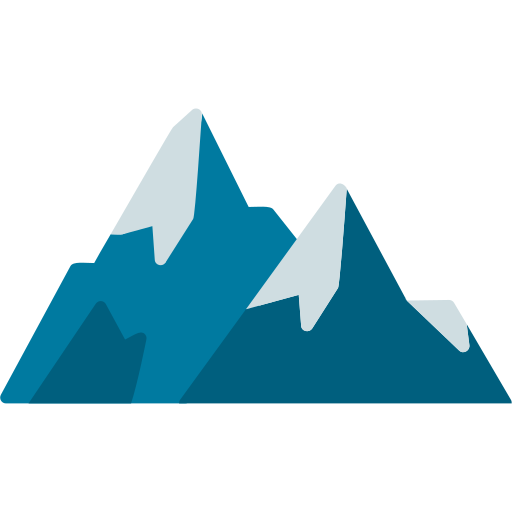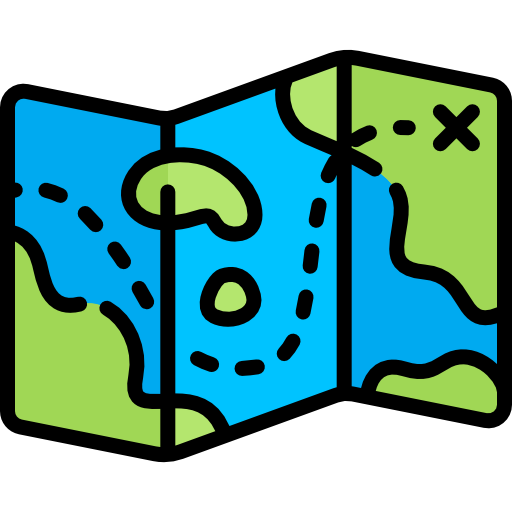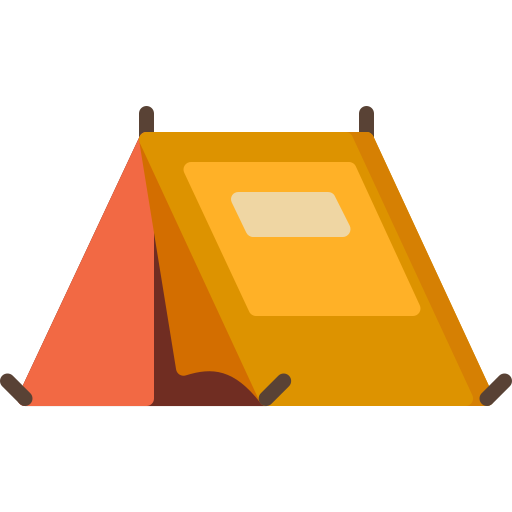ROOPKUND TREK
/ Per Person

Altitude :
15,700 ft.

Duration:
8 Days

Trek Length

Base Camp:
Garhwal

Trek Difficulty :
Moderate

Altitude :
15,700 ft.

Duration:
8 Days

Trek Length

Base Camp:
Garhwal

Trek Difficulty :
Moderate
OVERVIEW
Roopkund Trek is without a doubt India’s most successful trek. Roopkund, also known as Mystery Lake, is a high-altitude glacial lake in Uttarakhand, India. Roopkund is located in the Trishul massif and is notable for the hundreds of human skeletons discovered at the lake’s shore. The Roopkund (lake) is about 15,700 feet above sea level. It is surrounded by ice-covered glaciers and snow-capped mountains, making it an ideal trekking location. The road to Roopkund passes across Ali and Bedni Bugyals, which are twin Bugyals. You can see peaks like Kedarnath, Chaukhamba, Neelkantha, Trishul, and Nanda Ghunti from the Roopkund trail.
ITINERARY
Day 1: From Haldwani towards Lohajung
Arrive in Haldwani early in the morning and board your vehicles for the drive to Lohajung, the Roopkund trek’s starting point. The road winds its way through the scenic Kumaon valley. We travel through the towns of Almora and Kausani. You’ll get some stunning views of peaks like Kamet and Panchachuli along the way. By the evening, we’ll arrive in Lohajung and check into a guesthouse for the night. At 2300 metres, the town of Lohajung (the starting point of the Roopkund Trek) also serves as a small mountain pass that connects the Gwaldam and Wan sides of the mountain. Spend some time in the evening at Lohajung’s small market, which closes very early, or take in a lovely sunset from the balcony of your guest house. Take your dinner early and rest for the night.
Day 2: From Lohajung towards Tolpani
Our day’s trail is better than the rest of the journey, and we quickly get engrossed in its elegance. Following the Neel Ganga, we trek through the jungle. The trail is easy at first, but gradually becomes more difficult. As the trek progresses, we settle in and begin negotiating the ascent to Ali Bugiyal. We arrive in Didina after a long hike. Tolpani is a gradual 1 km climb from Didina.
Day 3: From Tolpani towards Patar Nachauni via Bedni Bugyal
We’re getting up early today, not just to take advantage of the best views, but also because it’s going to be a long day. We’ll stroll through Ali and Bedni’s twin meadows. When we meet Ali Bugyal, the trail is steep. The trail then consists of long stretches of rapid climb. On the hike, you’ll see that these meadows are among the best in the world. Nanga Ghunti and Trishuli are prominently visible in the east as you pass across the Ali Bugyal. We stick to the well-marked route. You’ll come across a small stone building. It’s a shrine, after all. A cluster of green fibre huts can be seen just to your right. Find a good place for the packed lunch here. A part of the trail ahead of you, beginning at the stone structure, is uphill and in a zigzag pattern. We start our trek after lunch and arrive at Bedni Bugyal Campsite in the afternoon. The journey is quick from here. Since the next campsite is not far away, walk quietly and gradually.
Day 4: Acclimatization and Rest Day
After a long Day 4, the day is set aside for relaxation and acclimatisation.
Day 6: From Bhagwabasa towards Roopkund and return to Patar Nachauni
Today, getting a head start is crucial. If the evening progresses, the snow begins to melt, making the climb more challenging. The snow is new and quick to walk on in the morning. Today’s hike is a 4-kilometer gentle climb with steep stretches in between. To get to the Roopkund, you’ll have to descend 250 feet in the final stretch (lake). Roopkund is located at an elevation of 15750 feet. We’ll hike to Junargali, which is just 250 feet higher than Roopkund, if the weather permits. We’ll return to Patar Nachauni after spending some time exploring. By late afternoon, you should be there.
Day 7: From Patar Nachauni towards Lohajung
Break camp early and travel to Wan. The trek today will take about 6-6.5 hours. We arrive in a village. We’ll stop for a while at Ghairoli Patal, which also serves as a nice camping spot. We must descend to the valley’s floor, where the river Neel Ganga awaits us. After a strenuous downhill trek, washing in the water is a good idea. It’s a half-hour climb uphill from the river to Wan. It’s another one and a half hour downhill from Wan village to Kasar Bagad, which is the route ahead. From here, we board a bus. Drive all the way up to Lohajung. In Lohajung, check into the Guest House. The Roopkund trek comes to an end here.
Day 8: From Lohajung towards Haldwani
Board the vehicle for the return trip to Haldwani in the morning. Arrive in Haldwani in the evening. It is recommended that you book your return flight from Kathgodam/Haldwani after 9 p.m. to ensure that you have enough time in case of road delays.
COST INCLUSION
Pick and Drop Service from mentioned location
Fees for the guide and the chef
Camping facilities’ rent
Entrance fees to the forest
To transport camping gear, a porter and mule are required. Please keep in mind that personal baggage can be borne by mules and/or porters for a fee
From the first day’s dinner until the last day’s brunch, both of the meals are vegetarian
Throughout the walk, you’ll be staying in a tent or if possible, then in a guest house
COST EXCLUSION
No pickup and drop point from/for your hometown
Personal costs include things like tips, personal medications, and conference calls, etc
Must Read Articles
Best time for the trek
🗓️ Best Time to Trek — A Guide by Octatrav
One of the key advantages of many Himalayan treks is that they remain accessible for a large part of the year. Most trekking routes open up in March, welcoming trekkers with springtime freshness and moderate temperatures. This season continues through late June, offering pleasant weather and clear views—ideal for a memorable trekking experience.
🍁 Trekking resumes in mid-September and continues until late November, when the landscape transforms with golden leaves and crisp air. This autumn window is perfect for those who prefer scenic beauty combined with clear skies.
❄️ Winter trekking, although breathtaking, comes with challenges. From December to mid-March, most high-altitude trails get buried under heavy snow, making them inaccessible or risky. Government authorities usually restrict entry during this time to avoid mishaps due to extreme cold, snowfall, and avalanches.
✅ Summary:
Spring & Summer (March–June): Best time for pleasant weather and blooming landscapes.
Monsoon (July–Early September): Most trails are closed due to safety concerns.
Autumn (Mid-September–November): Ideal time with great weather and views.
Winter (December–Mid-March): High snow levels; many treks remain closed.
With Octatrav, you’ll always be informed about the best seasons for your chosen trek. Our expert guidance ensures that you trek during the safest and most scenic times of the year, making your adventure both memorable and secure.
How Difficult is the trek
This trek is generally considered to be of moderate difficulty, with a rating that can vary from easy to challenging depending on your experience and fitness level.
The journey begins at a base village situated around 6,000 ft, gradually ascending to a maximum altitude of nearly 11,500 ft over the course of a few days.
While the route mostly involves a pleasant hike through scenic landscapes, here are two main reasons why it falls under the moderate category:
– Long daily distances: On average, you may be covering 10 km per day, which demands good stamina and consistent pacing.
– Limited exit points: Most treks of this nature have only one route in and out, making emergency exits or quick returns difficult in case of unforeseen situations.
How to get fit for your trek
How to Prepare for a High-Altitude Trek
Fitness Guide by Octatrav
Preparing for a trek requires building both stamina and strength. One of the best ways to get started is by jogging, which targets the same muscles used during trekking—calves, glutes, and hamstrings. It’s a simple and effective way to improve endurance without the need for any equipment.
Minimum Fitness Target
To trek comfortably, you should be able to run 5 km in under 60 minutes. This ensures that you can maintain a steady pace and handle long walking hours at altitude.
How to Achieve This?
Here’s a structured plan you can follow:
🏃♂️ Cardio Training:
Jog at least 4 times a week – consistency is key.
Start small – begin with 2 km runs and gradually increase the distance.
Pace improvement – once you’re running 5 km, aim to bring your timing down to under 35 minutes.
Maintain for 2 weeks – consistently hitting this goal helps build real endurance.
⏳ Training Duration:
Prepare for at least 4–6 weeks based on your current fitness level. The earlier you begin, the better your trek experience will be.
💪 Strength Training Routine
Combine cardio with strength workouts to build muscular endurance:
Squats – builds quads, glutes, and hamstrings.
Lunges – mimics trekking motion; strengthens the entire lower body.
Step-ups – improves climbing strength for steep trails.
Core exercises – planks, Russian twists, leg raises for balance and stability.
Back workouts – deadlifts, bent-over rows, and shoulder presses to carry your backpack with ease.
🧘♂️ Flexibility & Recovery
Stretch daily – especially your calves, hamstrings, quads, and lower back.
Incorporate yoga or Pilates – enhances flexibility and mental focus.
Take rest days – they are essential for muscle recovery and injury prevention.
🔁 Trek-Ready Summary
🏃♂️ Cardio: Build stamina through jogging.
💪 Strength: Focus on legs, back, and core.
🤸♂️ Flexibility: Stretch regularly and stay injury-free.
⏳ Consistency: Stick to a 6–8 week routine for best results.
10 Reasons to Choose Octatrav for Trek
Why Choose Octatrav for Your Trekking Adventure?
Trekking in the Himalayas is a thrilling and unforgettable experience. Whether you’re walking through snow-covered paths, lush forests, or peaceful riversides, choosing the right trekking operator is crucial for a safe and comfortable journey.
Octatrav stands out as a trusted name in the trekking world. Here are 10 strong reasons to choose Octatrav for your next high-altitude adventure:
1. Experienced Professionals
Octatrav’s team includes highly trained professionals who know the terrain, weather, and routes in depth. Their insights and support will elevate your trekking experience.
2. Focused on Safety
Trekking at altitude can be unpredictable. Octatrav ensures your safety by equipping the team with first-aid kits, oxygen, and emergency protocols for any situation.
3. Small Group Sizes
To give you personal attention and a relaxed experience, Octatrav keeps group sizes small. This also reduces environmental impact and makes for smoother trekking.
4. Eco-Friendly Trekking
Octatrav encourages responsible travel. From minimizing plastic use to proper waste disposal at campsites, they help you leave no trace.
5. Comfortable Camping
After a long day of trekking, good rest matters. Octatrav sets up cozy camps with quality tents, warm sleeping bags, and hot meals so you sleep well and stay energized.
6. Nutritious Meals
Fueling your body right is essential. Octatrav serves fresh, nutritious meals for both vegetarians and non-vegetarians to keep your energy levels high throughout the trek.
7. Affordable Packages
You don’t have to overspend for a great experience. Octatrav offers budget-friendly packages that include accommodation, meals, guidance, and permits—everything you need.
8. Relaxed & Scenic Pace
Octatrav designs treks that balance exploration and rest. You’ll get ample time to absorb the beauty around you without rushing through the journey.
9. Customizable Itineraries
Want a special experience? Octatrav helps you tailor the trek to your preference—be it a solo hike, photography-focused trail, or a slower pace.
10. Trusted by Trekkers
Octatrav is praised by many happy trekkers for its hospitality, safety, and professionalism. The positive reviews speak for themselves.
Why You Should Do the Har Ki Dun Trek
Why Choose This Himalayan Trek for Your Next Adventure? – by Octatrav
Exploring the Himalayas is a dream for many, and every trail has its own magic. Whether you’re a first-time trekker or a seasoned explorer, here are ten reasons why your next trek with Octatrav can be an unforgettable experience:
1. 🏔️ Breathtaking Scenery
Enjoy mesmerizing views of snow-covered peaks, lush green valleys, sparkling rivers, and alpine forests. Each turn on the trail feels like walking through a postcard.
2. 🏡 Rich Cultural Experience
Pass through remote villages where you can interact with warm-hearted locals, witness age-old traditions, and taste authentic mountain hospitality.
3. 🌿 Diverse Flora and Fauna
From rare Himalayan birds to elusive animals like musk deer or black bears, the region is rich in biodiversity. Nature lovers and wildlife photographers will find every step rewarding.
4. 🥾 Moderate Difficulty Level
Most Himalayan treks are rated as moderate, which makes them suitable for beginners with preparation, and still exciting for experienced trekkers looking for beauty and challenge.
5. 📖 Mythological & Historical Depth
Many Himalayan regions are steeped in legend and ancient lore. Walking these trails often feels like stepping into a living story from Indian epics or ancient folklore.
6. 🤫 Peaceful & Untouched
Less commercialized treks offer serene trails where you can disconnect from city chaos and truly reconnect with nature and yourself.
7. ⛺ Unique Campsites
Camp under a sky full of stars, beside rivers or deep in pine forests. The silence, the chill, the camaraderie — it’s an experience that stays with you forever.
8. 🎒 Adventure Add-ons
Beyond trekking, enjoy photography, bird watching, star-gazing, or even meditative moments in nature. It’s not just a trek — it’s a full adventure retreat.
9. 🌅 Magical Sunrises & Sunsets
Witness golden hours like never before — with Himalayan peaks glowing pink, orange, and gold. These views are pure magic and make every effort worthwhile.
10. 💪 Personal Growth
Trekking challenges your body and mind, pushing you beyond limits. By the end, you’ll not only have beautiful memories but also a stronger, more confident version of yourself.
